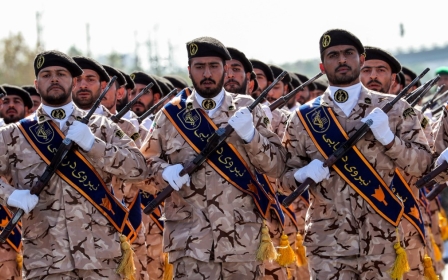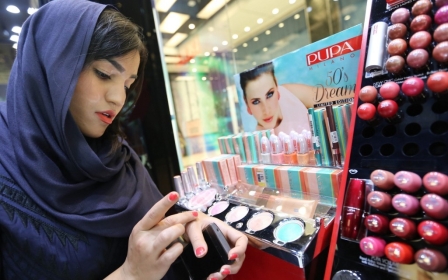Iranian press review: Oil money spent on Trump's election campaign

Iranian money in Trump campaign
Money meant to be spent on an oil-drilling rig for Iran was invested in Donald Trump’s 2016 campaign and the wine industry, according to ISNA news agency.
On 6 April, a court in Tehran found three Iranians guilty of graft and corruption over what was meant to be the purchase of the Fortuna oil rig for the Iranian Offshore Engineering and Construction Co (IOEC), while Mahmoud Ahmadinejad was in power.
New MEE newsletter: Jerusalem Dispatch
Sign up to get the latest insights and analysis on Israel-Palestine, alongside Turkey Unpacked and other MEE newsletters
But the money was never transferred to GSP, and Tabatabei escaped to the UAE, where he had a registered company. Court testimonies from his partners show he invested part of the money in the wine industry.
Another part was donated to Trump’s presidential election campaign, ISNA news agency reported.
The court sentenced Tabatabaei to three years in prison - but he is now residing in the UK.
The case of the “missing oil rig” is just one of several fraud and embezzlement cases that took place while Ahmadinejad was in office trying to bypass international sanctions.
US move against IRGC unifies Iranian political factions
The US designation of the Iranian elite force Islamic Revolutionary Guard Corps (IRGC) as a terrorist organisation, has caused a wave of unity among rival political factions in Iran.
For two days, front pages of all the Iranian dailies - from far-right to pro-reformist - were covered by images of IRGC forces and headlines of outrage and condemnation.
On 9 April, the far-right Kayhan daily denounced the US move with the headline: “Trump with his stupidity orders permission to kill US forces”. On the same day, the Etemad daily, Kayhan’s arch-enemy, covered its front page with a photo of parading IRGC forces with the headline: “I’m too a Pasdar [a member of IRGC]”.
A day later, the front pages of most daily newspapers in Iran were dedicated to images of Iranian legislators who all appeared in the parliament in green olive military uniforms.
On 10 April, the hardline Javan daily, with close ties to IRGC, chose the headline “Iran become the guardian of IRGC” to run with an image of MPs in IRGC uniforms. The reformist daily Mardom Salari, published a similar image on the front page, with the headline “American mistake”.
Election speculation begins
Speculations have already begun about the winner of Iran’s 2020 legislative elections.
Experts believe that hardliners have a higher chance to win a majority in the next parliament due to international pressures on Iran and the inability of reformists to see their promises through.
A crackdown on paper
The prices of daily papers have been rising recently and increases in the prices of imported paper and printing materials is the main cause, according to the editor in chief of Etemad.
Since the May 2018 reimposition of American sanctions on Iran, the country’s currency has rapidly devalued and the inflation rate increased. As a result, the prices of imported materials have tripled in Iran.
Meanwhile, unverified reports say that over 70 journalists and administrative employees for the Hamshahri daily were sacked. The daily is owned by Tehran’s municipality, and with over 200,000 copies has the highest circulation in Iran.
In addition to economic crisis, imposing strict censorship by the authorities has been another factor in the weakening of print media in Iran.
* Iranian press review is a digest of reports that are not independently verified as accurate by Middle East Eye.
Middle East Eye delivers independent and unrivalled coverage and analysis of the Middle East, North Africa and beyond. To learn more about republishing this content and the associated fees, please fill out this form. More about MEE can be found here.





